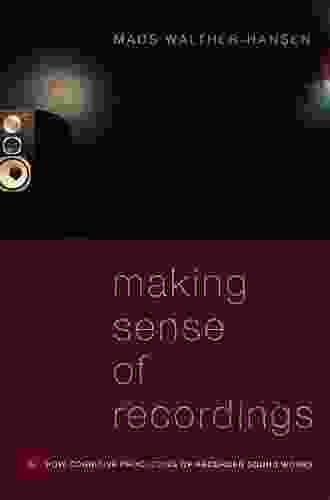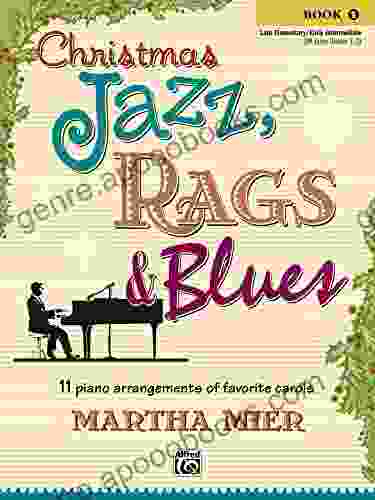How Cognitive Processing of Recorded Sound Works: An Immersive Exploration

Recorded sound has become an integral part of our modern world, shaping our entertainment, communication, and education. But what happens when sound enters our ears and travels through our brains? How do we make sense of the myriad frequencies and patterns that constitute music, speech, and other auditory stimuli?
4.5 out of 5
| Language | : | English |
| File size | : | 4856 KB |
| Text-to-Speech | : | Enabled |
| Enhanced typesetting | : | Enabled |
| Word Wise | : | Enabled |
| Print length | : | 154 pages |
| Lending | : | Enabled |
| Screen Reader | : | Supported |
The cognitive processing of recorded sound is a captivating and complex phenomenon that involves a multitude of brain regions and neural pathways. This comprehensive guide will embark on a journey into the intricacies of this process, unveiling the remarkable mechanisms that allow us to perceive and interpret the world of sound.
The Auditory Pathway: A Sensory Journey
The journey of recorded sound begins in the outer ear, where sound waves are collected and funneled into the ear canal. These waves then strike the eardrum, causing it to vibrate. The vibrations are transmitted through the middle ear, consisting of three tiny bones: the malleus, incus, and stapes.
The stapes bone connects to the inner ear, specifically the cochlea, a spiral-shaped tube filled with fluid. Within the cochlea, the vibrations cause the fluid to ripple, stimulating specialized cells called hair cells. These hair cells convert the vibrations into electrical signals, which are then transmitted to the auditory nerve.
The auditory nerve carries the electrical signals to the brainstem, where they are processed by the cochlear nucleus. From there, the signals are relayed to the superior olivary complex and the lateral lemniscus, two structures responsible for sound localization and binaural hearing.
The final destination of the auditory signals is the auditory cortex, located in the temporal lobes of the brain. The auditory cortex is responsible for processing the complex patterns and frequencies of sound, allowing us to differentiate between different sounds and perceive them as meaningful stimuli.
Decoding Music and Speech: A Symphony of Brain Activity
Music and speech are two distinct types of auditory stimuli that require specialized processing mechanisms in the brain. Music, with its rich tapestry of notes and rhythms, activates a network of brain regions including the auditory cortex, the prefrontal cortex, and the hippocampus.
The auditory cortex analyzes the pitch, timbre, and rhythm of musical notes, while the prefrontal cortex and hippocampus are involved in musical memory and emotional responses. This complex interplay allows us to enjoy music on multiple levels, from appreciating its technical virtuosity to feeling its emotional impact.
Speech processing, on the other hand, primarily involves the left hemisphere of the brain. The auditory cortex analyzes the acoustic properties of speech sounds, such as formants and prosody. The Wernicke's area, located in the posterior superior temporal gyrus, is responsible for understanding the meaning of words and sentences.
Broca's area, located in the frontal lobe, is involved in speech production. It controls the muscles that move the lips, tongue, and vocal cords, enabling us to articulate words and convey our thoughts and emotions.
Environmental Sounds and Memory Formation: A Tapestry of Auditory Experiences
Beyond music and speech, we are constantly bombarded by a myriad of environmental sounds, from the gentle rustling of leaves to the cacophony of traffic. These sounds are processed in the auditory cortex, but they also have a profound impact on our memory and cognitive functions.
The hippocampus, known as the brain's memory center, is heavily influenced by auditory stimuli. Environmental sounds can become associated with specific events, places, or emotions, creating vivid memories that can be triggered by even the slightest auditory cue.
For example, the sound of a school bell may evoke nostalgic memories of childhood classrooms, while the chirping of birds may remind us of peaceful walks in the park. This interplay between sound and memory enriches our lives and provides a multisensory tapestry of our experiences.
The cognitive processing of recorded sound is a fascinating journey that unveils the intricate mechanisms of our auditory system. From the physical vibrations of sound waves to the complex neural pathways in our brains, each step of this process contributes to our ability to perceive, interpret, and enjoy the world of sound.
This comprehensive guide has provided a glimpse into the depths of this cognitive journey, demonstrating the remarkable capabilities of the human brain and the profound impact that sound has on our lives. As we continue to explore the mysteries of auditory perception, we uncover the wonders of our own consciousness and the boundless possibilities of sound.
4.5 out of 5
| Language | : | English |
| File size | : | 4856 KB |
| Text-to-Speech | : | Enabled |
| Enhanced typesetting | : | Enabled |
| Word Wise | : | Enabled |
| Print length | : | 154 pages |
| Lending | : | Enabled |
| Screen Reader | : | Supported |
Do you want to contribute by writing guest posts on this blog?
Please contact us and send us a resume of previous articles that you have written.
 Book
Book Novel
Novel Page
Page Chapter
Chapter Text
Text Story
Story Genre
Genre Reader
Reader Library
Library Paperback
Paperback E-book
E-book Magazine
Magazine Newspaper
Newspaper Paragraph
Paragraph Sentence
Sentence Bookmark
Bookmark Shelf
Shelf Glossary
Glossary Bibliography
Bibliography Foreword
Foreword Preface
Preface Synopsis
Synopsis Annotation
Annotation Footnote
Footnote Manuscript
Manuscript Scroll
Scroll Codex
Codex Tome
Tome Bestseller
Bestseller Classics
Classics Library card
Library card Narrative
Narrative Biography
Biography Autobiography
Autobiography Memoir
Memoir Reference
Reference Encyclopedia
Encyclopedia Raphaella Bilski
Raphaella Bilski Tony Benn
Tony Benn Margaret Campbell Barnes
Margaret Campbell Barnes Nicole Burton
Nicole Burton Lavelle D Eagle
Lavelle D Eagle Robyn Cairns
Robyn Cairns Sam Minot
Sam Minot Pj Fiala
Pj Fiala Shelley Wood
Shelley Wood Seth Friedman
Seth Friedman Linda Hogan
Linda Hogan Harvey Kurtzman
Harvey Kurtzman Tetsuo Yanagi
Tetsuo Yanagi Kimberly Knight
Kimberly Knight Gill Blanchard
Gill Blanchard Nicholas Deiuliis
Nicholas Deiuliis Life Lab Academy
Life Lab Academy Mande Matthews
Mande Matthews Wendy D Johnson
Wendy D Johnson Nivedita Vedurla
Nivedita Vedurla
Light bulbAdvertise smarter! Our strategic ad space ensures maximum exposure. Reserve your spot today!
 Octavio PazFollow ·19.8k
Octavio PazFollow ·19.8k Gary ReedFollow ·14.2k
Gary ReedFollow ·14.2k Eli BlairFollow ·15.7k
Eli BlairFollow ·15.7k Benji PowellFollow ·9.5k
Benji PowellFollow ·9.5k Elton HayesFollow ·6.3k
Elton HayesFollow ·6.3k Dalton FosterFollow ·15.3k
Dalton FosterFollow ·15.3k Andres CarterFollow ·13.5k
Andres CarterFollow ·13.5k Nathaniel PowellFollow ·11.5k
Nathaniel PowellFollow ·11.5k

 Finn Cox
Finn CoxCarmen Suite For Flute Quartet (G Alto Flute) ( Carmen...
Experience the Magic of...

 Andy Cole
Andy ColeUncover Hidden Truths: A Comprehensive Guide to Detecting...
: The Silent...

 Ken Simmons
Ken SimmonsUnleash Your Potential: Transform Frustration and...
Are you tired of feeling...

 Rick Nelson
Rick NelsonHard To Kill: A Gripping Thriller That Will Keep You on...
Tom Rollins is a...

 Ivan Turner
Ivan TurnerUnleash the Power of Your Breath: Discover Breath...
In the tapestry of life, where stress and...
4.5 out of 5
| Language | : | English |
| File size | : | 4856 KB |
| Text-to-Speech | : | Enabled |
| Enhanced typesetting | : | Enabled |
| Word Wise | : | Enabled |
| Print length | : | 154 pages |
| Lending | : | Enabled |
| Screen Reader | : | Supported |














